Brahmaea certhia
Fabricius, 1793
Brahmaea certhia male from China
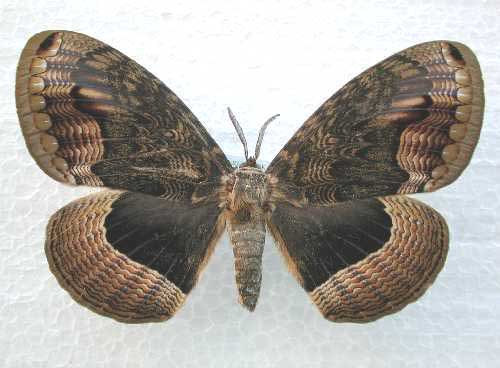
Brahmaea certhia male from China
The owl moth, Brahmaea certhia, hails from China.
I believe the specimen to the right may be a female Brahmaea certhia.The rows of parallel fasciae in the hindwings seem considerably wider, and the antennae seem less pronounced. | 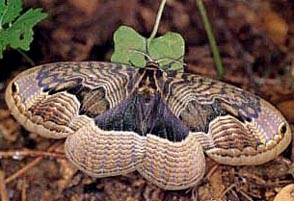 |
The specimen to the right appears to be a male, simply based on slightly wider antennae.The wavy parallel lines probably assist with camouflage on tree bark. |
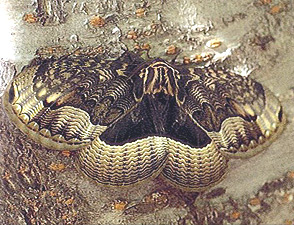 |
According to Scott Henninger, "The larva have very interesting coloration, and will often make noise when disturbed (a kinds of cross between a squeak and chirp)."The third instar is mostly a tan color with a violet hue on its back. The twist in the "antennae" is very prominant in this stage." Image courtesy of Scott Henninger. |
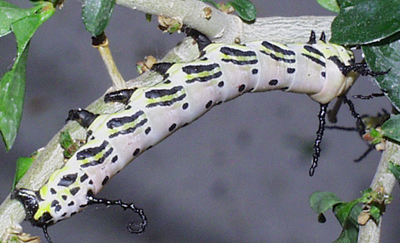 |
Instars 1-3 have the elongated "horns".The fourth and fifth instar larvae lose their elongated scoli and develop false eyespots on the dorsal surface of the thoracic segments. When disturbed, larvae assume a defensive posture, accentuating the eyespots, and wave the head and thoracic segments back and forth as if to strike. Photo courtesy of Scott Henninger | 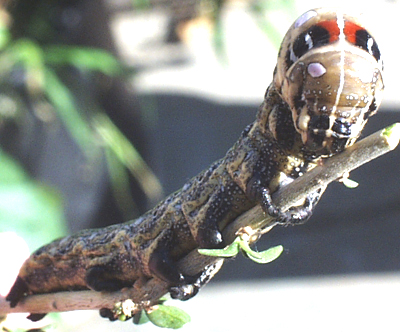
|
Larvae feed on Ligustrum obtusifolium and probably other Ligustrum species. Mature larvae descend host stems and form relatively smooth pupae with very short cremasters.I suspect the larvae will pupate without soil under some loose paper towels. Image courtesy of Scott Henniger. For more information and images, visit http://csce.unl.edu/~scotth/samantha/moths-butterflies.html?page=brahmaea
| 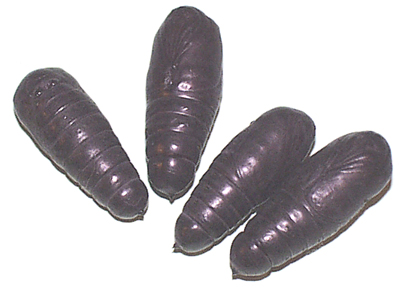 |
Return to Main Brahmaeidae Index
Return to Brahmaea Index